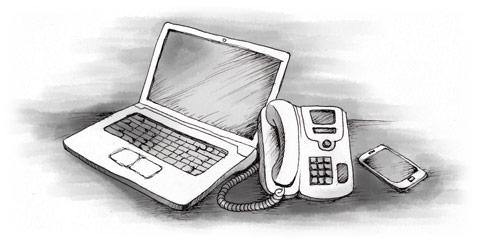However, as a foreigner you may come across some obstacles that you can overcome by following a few simple steps.
Main providers
As there are a number of different internet providers operating in Korea, and the array of products is huge: You can opt to have all types of connections from the most basic dial-up to the fastest broadband. Korea Telecom is the nation’s largest broadband internet service provider. KT offers broadband DSL and cable (Megapass) as well as hotspot access (Nespot). It even provides wireless on-the-go services (WiBro) for your handheld PC or phone.
Hanaro Telecom is the second largest internet provider in Korea and also offers DSL and Cable services (Hanafos). Unitel and Chollian are two popular service providers for dial-up internet through your local phone line.
Dial-up
Although most Koreans have some form of wireless internet access, some people still use dial-up to connect. This service is ideal for people that only use the internet on occasion or for smaller projects. You will have to find an adapter to convert your Korean phone plug to one that is compatible with your system.
Broadband
About 75% of homes in Korea have broadband internet access. Faster and more efficient than dial-up, thus making it the more popular choice. You can choose from a wide selection of broadband products: DSL, Cable Modem, Satellite, etc. Each company offers special features and different contract lengths. Some even offer a convenient month by month pay system so you do not have to sign any binding contracts.
PC Bangs/Internet Cafes
If you’re not looking to sign up for a monthly service and would rather connect to the internet from time to time without any binding agreements, you have a number of options. South Korea is littered with PC bangs (PC rooms) and Internet Cafés. You will find one on almost every corner and you can simply walk in and go online for as long as you would like to at your own discretion.
Hotspots
Hotspots are another option to connect to the internet from any WiFi hotspot with no contracts or required minimum access. Nespot, a branch of SK Telecom, is Korea’s most popular hotspot WiFi service. If you have a South Korea National ID card, you will need to submit your resident registration number in order to sign up with Nespot. Otherwise, as it is the case for most foreigners, you will need to invest in prepaid cards which allow you to connect for either 60 minutes or have unlimited access for 24 hours. The hotspots are located everywhere from cafés, to fast food restaurants and shopping areas and even at churches, so finding an access spot should be fairly easy.
Aircard
This is internet access hosted through a cellular modem. You simply insert the Aircard into your laptop's PC card slot and get connected through the cellular phone network! Most mobile phone service providers now offer this service and support Aircards of all specs and features. If you opt to use this service, you should call your local mobile phone service provider to find out more details about connections while abroad.
Content restrictions
The South Korea government has been working on banning certain websites and putting restrictions on what one can download. Pornographic sites, anything promoting drugs and violence, and other illegal content is prohibited.

